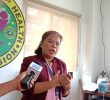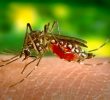MANILA — “We do not have the disease (in our country).”
This was the statement made by Malacanang advising people not to panic over swine flu officially known as Influenza A(H1N1), which the World Health Organization (WHO) says has 658 confirmed cases worldwide.
Deputy presidential spokesperson Anthony Golez said that President Gloria Macapagal-Arroyo has directed the National Disaster Coordinating Council (NDCC) to closely monitor the epidemic that has already killed more than 100 people in Mexico and the United States.
Defense secretary Gilbert Teodoro was also ordered by the President to convene the NDCC and review contingency plans already in place in case swine flu gets in the country.
He said this is not the first time that a pandemic scare has gripped the world. The first was in 2003 when Sars (severe acute respiratory syndrome) broke out, and also in 2006 when the avian influenza spread to some parts of the world.
Golez said the country has had experiences in contingency planning, with the NDCC as the lead agency and the Department of Health (DOH) and Department of Agriculture (DA) as members.
He said contingency plans now have been drawn up to address flu epidemics. “What is important is that aside from the government, the people help so that we can all prevent the Mexican swine flu from reaching our country,” he said.
Golez explained that swine flu that has infected a number of people in Mexico is a mixture of the flu virus from pigs and from humans, which made it evolve into a different strain of virus.
There has been no vaccine discovered to treat the Mexican swine flu. He said vaccines manufactured in the past were found not effective in treating current or new viral strains. “The strains mutate”, explained Golez, a doctor of medicine. (PIA)
A(H1N1), Influenza, swine flu









